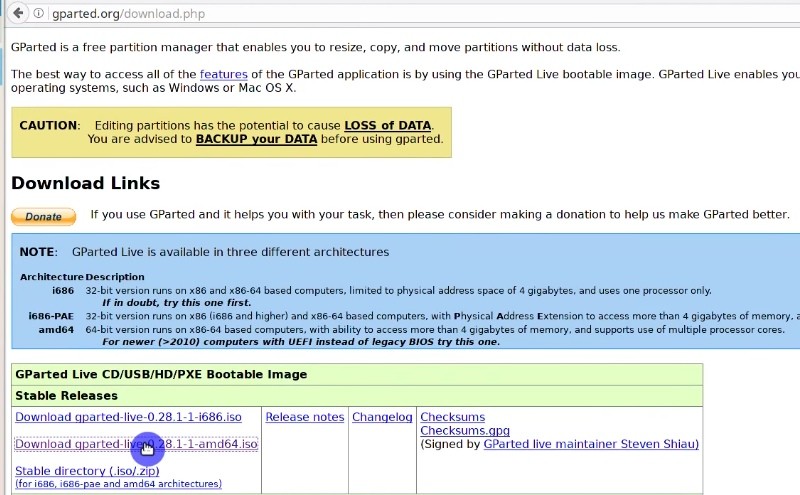

- #HOW TO RESIZE LINUX ISO FILE HOW TO#
- #HOW TO RESIZE LINUX ISO FILE MOVIE#
- #HOW TO RESIZE LINUX ISO FILE DOWNLOAD#
- #HOW TO RESIZE LINUX ISO FILE FREE#
#HOW TO RESIZE LINUX ISO FILE MOVIE#
In that case, you can’t watch your movie on the disk’s physical copy. If you are struggling with a damaged ISO that could not be run because of a break in the DVD video structure, then you might be looking for a way to rip the video files. Using this tool, users can make virtual drives, copy or burn DVDs or CDs, mount disk images, and convert among disk image formats. In addition to it, this incredible application reads a diverse range of image files. If you have any questions or comments regarding the article, let us know.One of the amazing tools that let you convert ISO to IMG is UltraISO. Finally, let’s mount the resized volume and check that our data is still here:Īs you can see, our test file is still here and the partition has a new size. Now the file system block size is the same as for partition configuration. Let’s fix the error using resize2fs and then check the filesystem again: This is due to shrinking the partition with no changes made to the file system metadata. Note the highlighted line - the tool shows that there is a mismatch in the file system configuration and current size. Now we need to verify consistency by running e2fsck: You can use the +G format to specify the desired partition size in Gigabytes (use “M” for Megabytes).

You may use default values in most fdisk questions, but carefully check these highlighted on the picture above: first sector (starting point) and last sector. Let’s run fdisk again and type “n” - creating the new one: In our example, the new partition will be a smaller size so the Shrink operation will be performed.
#HOW TO RESIZE LINUX ISO FILE FREE#
Simply saying, free space should be at the end of the resizing. You can extend the partition only to the space available at the “right” side.The following procedure is the same for both actions, but keep in mind that: Now delete this partition by typing “d” and then type “w” to save these modifications:Īfter the old partition is removed we need to create the new one, either a bigger or smaller size. Remember “Start” value (2048 in this example). The last line contains important info about the current partition size and its bounds: “Start” and “End”.

Now run fdisk command with our test disk name as an argument and then type “p” to print the list: And don’t forget sudo to get appropriate permissions: We need to unmount the volume before modifications - just run the umount command, where mounting point is a file system’s representation of the device. I have created the file file_should_remain.test to check whether the partition did not lose its data You can check it using, for example, the lsblk tool (for block-level devices only): /dev/xvdb1 - one partition allocated on /dev/xvdb device.You have also use the sudo command if your current account doesn’t have “root” privileges. Note: depending on your Linux distribution and available storage devices, volume and drive names can be different. So, the disk we are working with is a block EBS device called /dev/xvdb. In this example, we are going to use Ubuntu Server 14 as an instance in Amazon EC2 cloud. resize2fs - modifies existing file system to fit new size bounds.

#HOW TO RESIZE LINUX ISO FILE DOWNLOAD#
Build an effective backup strategy for your Linux system: download our free Once data is deleted it cannot be undeleted. We will use only built-in tools and commands.īefore you begin with partitions, make sure you have a solid backup.
#HOW TO RESIZE LINUX ISO FILE HOW TO#
In this article, we will overview how to resize a partition in a Linux.


 0 kommentar(er)
0 kommentar(er)
